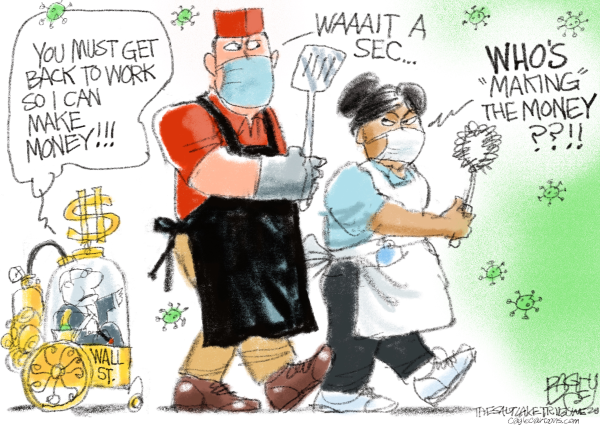Florida sees largest COVID-19 case increase in over a month
By Michelle Marchante and Devoun Cetoute, The Miami Herald
1 day ago
https://www.msn.com/en-us/health/medical/florida-sees-largest-covid-19-case-increase-in-over-a-month/ar-BB14MmdJ
Study: 24 states have uncontrolled virus outbreaks
Atlanta mayor steps into national spotlight with plea to protesters
Florida’s Department of Health on Friday morning confirmed 1,212 additional cases of COVID-19, bringing the state total of known cases to 54,497. There were also 49 new deaths announced, raising the statewide toll to 2,413.
Friday’s increase in cases marks the largest daily increase in more than a month. Before Friday, April 17 saw the largest increase in cases at 1,413 cases. Since then, the state has only seen case increases larger than 1,000 in a single day three times.
The state is also expected to release its COVID-19 antibody test results for the first time Friday. The data could give scientists indicators of how widespread the disease has become in the state.
The COVID-19 antibody tests have been administered to healthcare workers, firefighters, police officers and other first responders over the past three weeks at drive-thru sites in Miami Gardens, West Palm Beach, Orlando and Jacksonville. Antibody tests were also distributed to hospitals to test healthcare workers.
How many confirmed COVID-19 cases are in South Florida?
Less than half of the new cases but more than half of the new deaths were in South Florida:
? Miami-Dade County reported 245 additional confirmed cases of COVID-19 and 16 new deaths. The county’s confirmed total is now at 17,641 cases with 685 deaths, the highest in the state.
? Broward County reported 105 additional confirmed cases of COVID-19 and one new death. The county’s confirmed total is now at 6,975 with 308 deaths.
? Palm Beach County saw 224 additional confirmed cases of COVID-19 and eight new deaths. The county’s known total is now at 5,765 with 335 deaths.
? Monroe County saw one additional confirmed case of COVID-19 and no new deaths. The Florida Keys now have 108 known cases and four deaths.
Here’s a breakdown on what you need to know:
Confirmed COVID-19 cases in Florida
More than half of the state’s known COVID-19 cases are in South Florida’s four counties: Miami-Dade, Broward, Palm Beach and Monroe. Miami-Dade continues to lead the state with the most confirmed cases and deaths. It has 17,641 known cases and 685 deaths.
Despite the daily reports of new cases and deaths, local and state officials have previously said that decreases in the daily total of reported cases are signs that social-distancing measures are working.
Officials are also relying on hospitalization data. Unlike testing, which might be limited or take days to report results, hospitalizations can help give officials a real-time visual of how many people are severely ill with COVID-19.
The health department says it doesn’t “have a figure” to reflect the number of people currently hospitalized and only provides the total number of hospitalizations in its statewide and county-level data.
On Friday morning, 187 hospitalizations were added, raising the statewide total count to 9,982. Hospitals in Miami-Dade are self-reporting a number of key metrics, including hospitalizations, to the county. Some provide updates every day; others don’t.
As of Friday, Miami-Dade had 582 COVID-19 patients currently admitted to hospitals, an increase of 36 patients, according to county data.
Scientists are also still working to learn more about the virus, including how many people in the community are infected with the disease and have mild or no symptoms, which can make it difficult to determine what percentage of the cases hospitalizations represent.
COVID-19 testing in Florida
Testing in Florida has seen steady growth since the COVID-19 crisis began and has started to see a steady decline in the percentage of people testing positive.
Testing, like hospitalizations, helps officials determine the virus’ progress and plays a role in deciding whether it is safe to lift stay-at-home orders and loosen restrictions.
The recommended numbers of daily tests needed vary by experts, but the dean of the University of South Florida’s College of Medicine told the governor Florida needs to test about 33,000 people every day. The state has hit or surpassed the recommended mark a few times this month but is typically several thousand under.
Florida’s Department of Health reported 30,839 new tests in Friday’s daily COVID-19 update. In total, the state has done 984,160 tests. Of the total tested, 54,497 or 5.54 percent have tested positive for the disease. The state says there are 1,308 pending tests.
For the first time since the pandemic began, health officials released antibody testing data from commercial laboratories on Friday.
In total, 123,552 tests for antibodies have been conducted and of those 5,474 were positive and 118,053 were negative. Of those tested, black people had a percent positive rate of 26.32 percent and white people had a 13.33 percent positive rate.
Miami-Dade County had the most residents undergo antibody testing with 21,402 tests conducted. Palm Beach came in second with 19,571 tests done and Broward came in third with 14,402 tests. Monroe has done 1,241 tests.
Health experts told the Miami Herald last month they were concerned the number of pending COVID-19 tests listed by the state is an undercount because Florida reports only the number of Floridians waiting to get test results from state labs, not private ones — and private labs are completing more than 90% of state tests.
Previously, it has taken as long as two weeks for the results of pending tests from private labs to be added into the state’s official count, making it difficult for officials to project the size and scale of the pandemic in the state. It’s unclear how quickly results are currently being sent to the state from private labs.
Miami Herald staff writer Daniel Chang contributed to this report.


